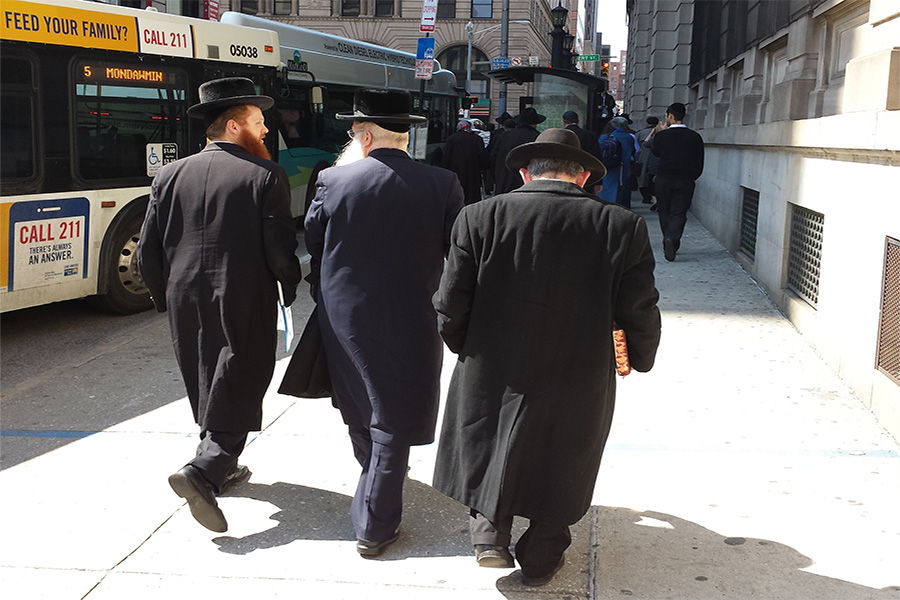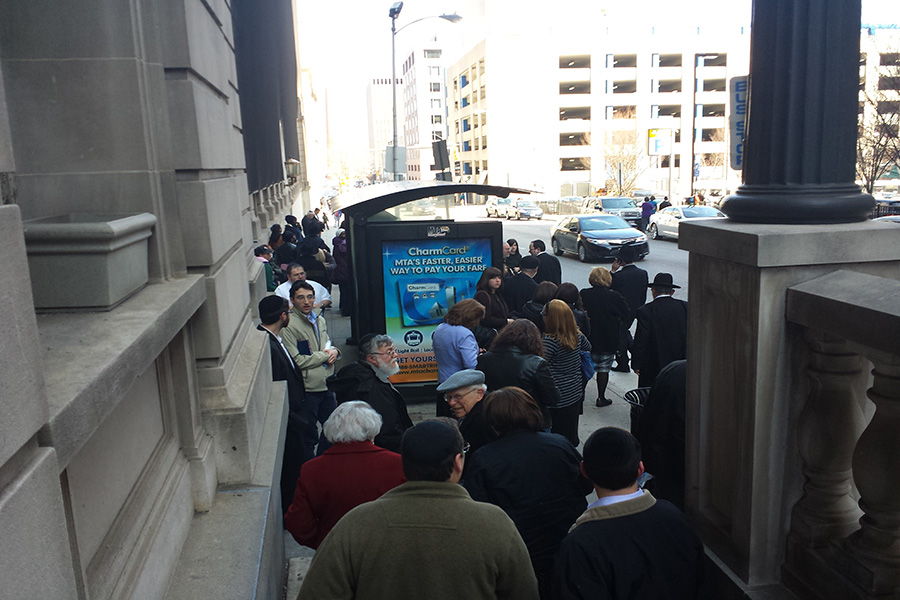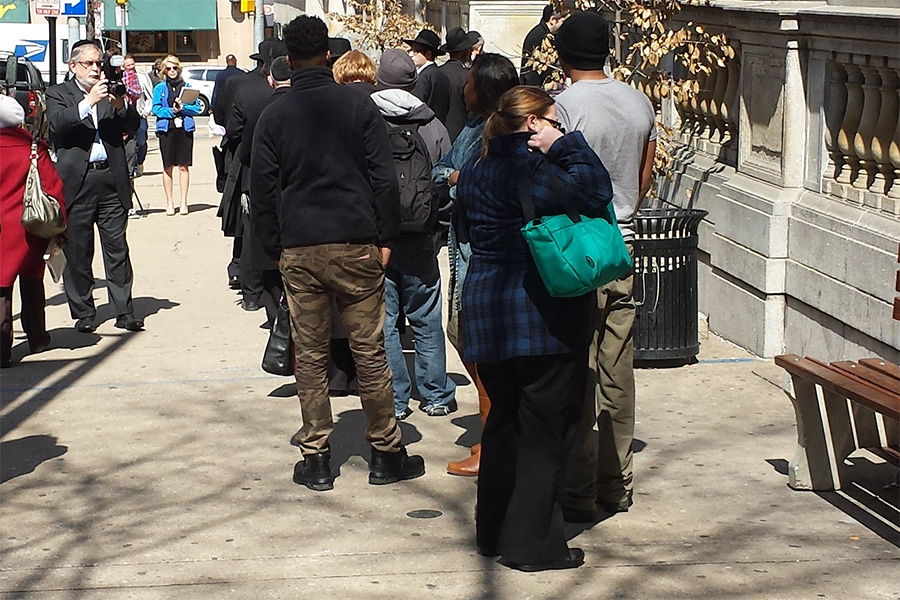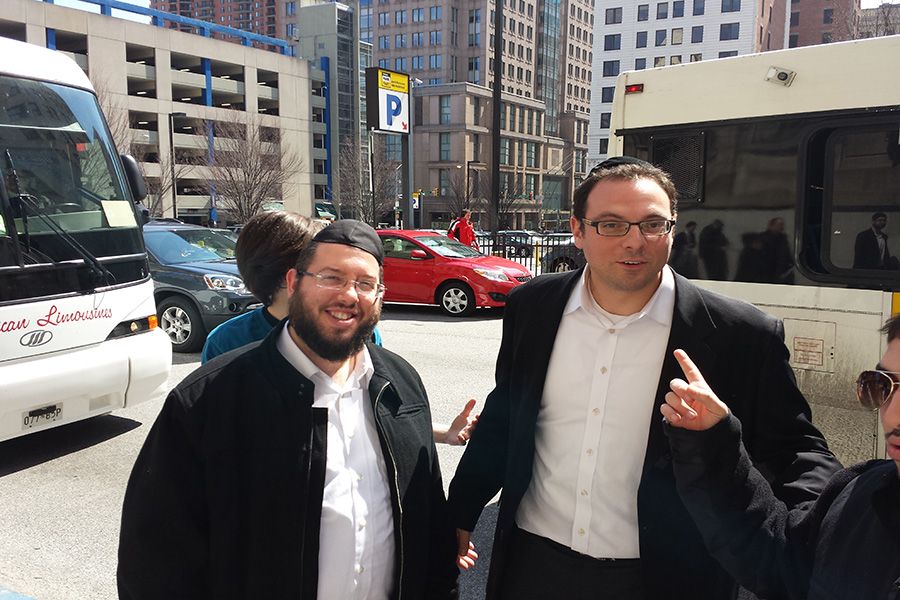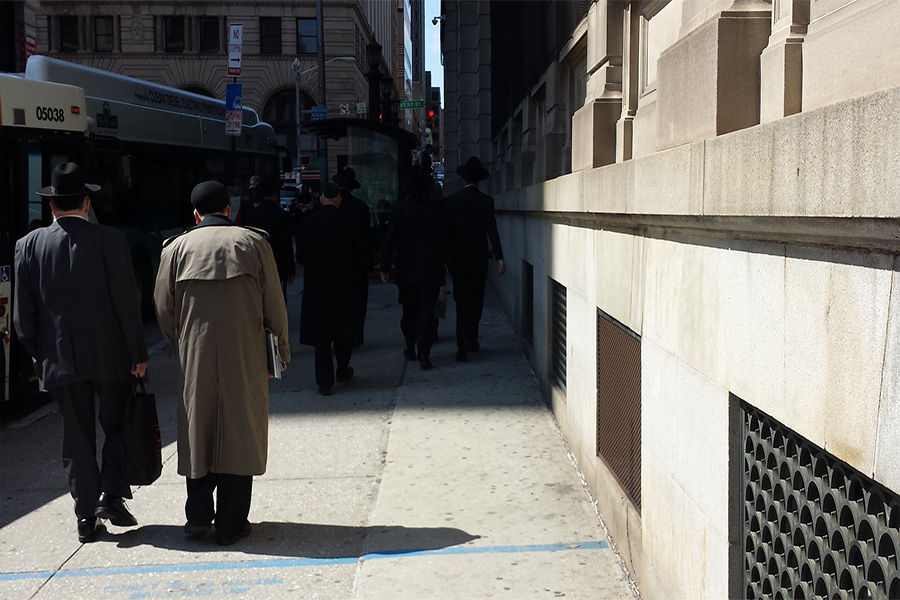|
On September 29, 1969, Wayne Young was in a bad mood.
He had just bought a boat, and his mother felt that it was a waste of money. They were part owners of a tropical fish store, and they didn’t have money to spend on such luxuries. They argued, and he felt very misunderstood.
So when Esther Leibowitz, an 11 year old girl on her way home from Bais Yaakov, came into his store, he took back control the only way he knew how. Her body was discovered in a ditch in Mount Washington, about a half mile from the store. Her clothing was disheveled, and she was covered in what at first appeared to be dirt, but detectives were able to link it to a very fine gravel used in fish aquariums. Her head had been bashed in with 17 blows from a hammer.
When the police arrived at the store, Young had done his best to clean up the crime scene. He had tried to wash away the blood and pump it out of the basement with the sump pump, and when that failed he had splattered a blue dye on the floor to try to cover it up. But nothing he had done could remove the stain.
Young was brought into the police station, where he prepared to take a polygraph. But in the pre-questions, designed to establish a baseline for establishing the truth or falsehood of the answers to the real questions, Young broke his silence. “I killed the little girl”, he said, after waiving his Miranda rights.
He then proceeded to enter a plea of not guilty- by reason of insanity. He probably wasn’t hoping to get away with the crime, but to avoid the death penalty. Claiming temporary insanity very rarely works, and the jury wasn’t buying it. They deliberated for only 30 minutes before returning with the verdict: guilty, of capital murder.
The arguments of the prosecutor from Young’s appeal in 1971 quotes the doctor who testified to his insanity:
Dr. William N. Fitzpatrick, called by the defense, in discussing Young's responsibility for his criminal conduct said that Young "readily" confessed to the crime. Reading from his report of his examination of Young, the doctor said: "The defendant oblivious to anything except a powerful impulse to hit [the victim] about the head, picked up a hammer and hit her repeatedly. No one else was around, and he struck her until she died."
Despite the jury’s verdict, Young did not receive the death penalty. He was sentenced to life in prison, and as life without parole did not yet exist, his first parole hearing wasn’t until 2006. He appealed his case twice, in 1971 and 1978, and lost both times.
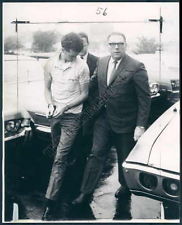 When his first parole hearing came around in 2006, the Jewish community organized to oppose his release. The parole board was presented with a pile of petitions and emails “2 to 3 inches thick”, the Owings Mills Times reported Neil Schachter as saying. Mr. Schachter is the president of the NWCP. The parole board took only a couple of minutes on the obvious decision, and Wayne Young was returned to the jail cell where he has spent 22 hours of every day for the last 44 years.
When his first parole hearing came around in 2006, the Jewish community organized to oppose his release. The parole board was presented with a pile of petitions and emails “2 to 3 inches thick”, the Owings Mills Times reported Neil Schachter as saying. Mr. Schachter is the president of the NWCP. The parole board took only a couple of minutes on the obvious decision, and Wayne Young was returned to the jail cell where he has spent 22 hours of every day for the last 44 years.
He came up for parole again in 2009, and was again denied. The verdict continued to be clear: Wayne Young was never getting out of prison. But on December 8, 2006, the case of Merle Unger vs State of Maryland came before the Circuit Court for Washington County.
Merle Unger was a small time crook, famed for his skill at breaking out of prison. On one occasion he had stolen a dump truck and driven it straight out through the front gate, waved through by the guards, who didn’t recognize him. On another, he cut his way through a fence with a pair of wire cutters before leading the police on a high speed car chase.
There is even a story that he used to break out of prison to go play bingo and then break back in again afterwards. He got away with it until a sheriff’s deputy recognized him during a game.
Unger was a folk hero in his home town of Shade Gap, PA, until one day he shot and killed a police officer while trying to rob a convenience store in Hagerstown, MD. He managed to escape from prison but was arrested in Florida for stealing a pair of handguns and extradited back to Maryland. As the trial began, the judge instructed the jury, as was standard practice, with the following message:
“Mr. Foreman, Ladies and Gentlemen of the Jury, it is now the duty of the Court to instruct you on the law applicable generally to criminal cases. Under the Constitution of Maryland, the jury in a criminal case is the Judge of the Law as well as the facts. Therefore, anything which I may say about the law, including any instructions which I may give you, is merely advisory and you are not in any way bound by it. You may feel free to reject my advice on the law and to arrive at your own independent conclusions. You are to make the sole determination as to what the evidence is and what the law is.”
Unger was convicted and sent to prison for the crimes of murder, armed robbery, and using a handgun to commit the crimes. He was sentenced to life in prison. He appealed the sentence various times before finally appearing before the Circuit Court for Washington County, which issued the infamous “Unger ruling”.
The Unger ruling held that since the judge’s instructions to the jury said that anything he said was advisory, this meant that his instructions that the jurors must be certain of guilt “beyond a reasonable doubt”, as required by law, might have been misunderstood by jurors to be “advisory”, and not binding. Therefore, some of them might have ignored reasonable doubts and voted guilty even though they shouldn’t have. For this reason, the court vacated his conviction and ordered that he be retried.
The ruling was subsequently upheld by the Maryland Court of Appeals in 2012.
Unger was reconvicted, and returned to prison, but the Unger ruling opened the door to declaring a mistrial for an enormous number of old convictions. Judges stopped issuing these directions to juries in the early 80s, so the only people the decision affected are those who were convicted before that time. There are only 200 or so cases that go back far enough for this to be an issue, and these convicts are the worst of the worst.
In many cases it can be very difficult, or even impossible to get a second conviction. Witnesses from back then can be hard to find again, and even if they’re found they may have trouble remembering the events. Evidence which has been sitting in storage for decades can become corrupted or misplaced. The Associated Press reported in November that 50 people had already been released from prison because of the Unger ruling, and that up to 200 could eventually be released back onto the streets.
Nearly half of the cases affected by the ruling are in Baltimore City. Mark Chesire, the spokesman for the Baltimore City State’s Attorney, explained the problem in an interview with WMAR.
"Once the initial decision came out we started to get hit with appeals and were fighting them," Chesire said. "Of the first 12 we faced, we won just once so we had to go to phase two of our attack. We look at whether we can go forward with a new trial, what evidence and witnesses still remain and what the prisoner's record has been in prison."
The case of Mr. Young has received widespread attention due to the gruesome nature of the crime. “It’s very important that the community came and showed support,” said Rabbi Heineman, a leading rabbi of the Baltimore Jewish community. “They found the area where the girl was killed and the walls were splattered with blood. This story has never calmed down in my mind, it still upsets me when I think about it.”
And show support they did. The courtroom today was packed with hundreds of people from the Jewish community who came out to show their support. Every bench was full (separate benches for men and women, of course), and people were packed in along the back wall and the aisles. Attorneys were pulled from the benches and seated in a special area along the side to open up more spots, which were immediately filled. The community wanted to show their conviction that a man who assaulted and murdered a little girl should not be let out of prison on a mere technicality.
“I feel that it’s very important to show myself as part of the Jewish community and include myself in that group, to stand up for justice for Esther, a”h.” said Manny Goldstein, a member of the community, when I asked him why he came down.
“I hope that it will keep him off the street,” said Rabbi Goldberger, the rav of a local shul. Whether it will or not still remains to be seen, as the judge declined to rule on the case today, saying he was taking it under advisement and would issue a ruling soon.
The level of the community’s involvement certainly must have made an impression on him, and on everyone else who saw it. Signs were posted in local shuls, and buses were arranged to bring people in and out from the courthouse, which was located far from the area of the Jewish community. As everyone waited in a long line to get inside, a woman walking past tapped me on the arm and asked me what everyone was doing.
“They’re here for the trial of a man who killed a girl 44 years ago.” I replied.
“Ah.” she said. “I usually see them walking on Park Heights on the weekends.”
It wasn’t just guys in kollel who came down to show support, though. The boys from CBMI’s new Lev Shlomo program came out in force as well.
“Our boys came to show the judge that it is not just those that remember the case that are standing in protest but that our community's youth as well are standing up in the name of justice and in support of our fellow Jews.” said Aryeh Zigdon, CBMI’s general manager. “Additionally, Rabbi Kohn and I used this as an educational opportunity to teach our boys, as our own Rabbi Yonasan Musman has taught them in the past, ‘if you stand for nothing, you fall for everything’. Now is the time to stand.”

